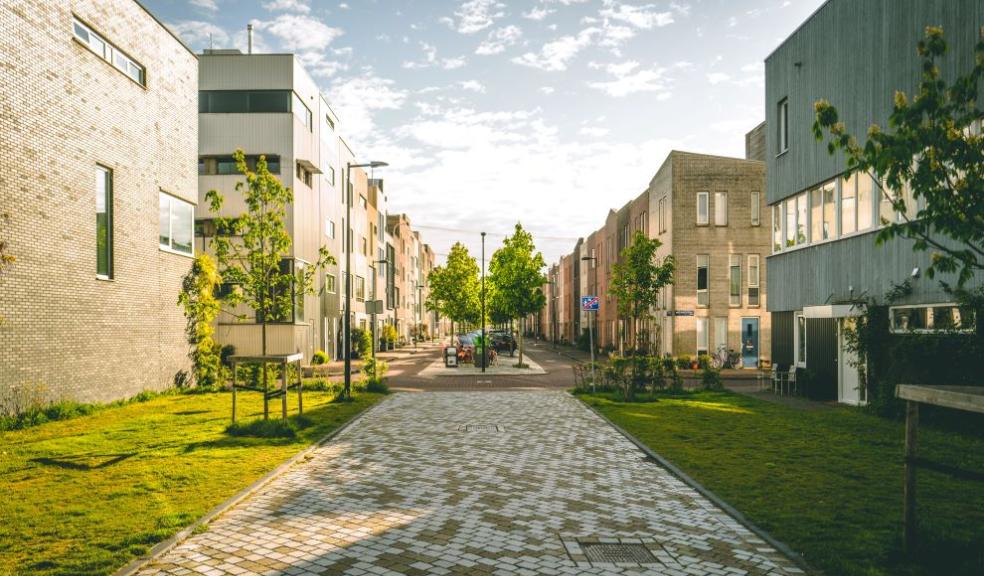
The Future of Land Value Capture by Lawrence Turner, Associate Director, Boyer Bristol
Secretary of State Michael Gove has argued that the public purse should capture a bigger proportion of the uplift in land value generated by a planning permission. More recently the Housing Minister Christopher Pincher, when asked a question about using land value capture to fund affordable housing in recent evidence to the House of Lords, commented ominously, ‘watch this space’.
Land value capture is not a new idea - in 1909 Winston Churchill gave a series of speeches on the budget in the run-up to the general election to promote the creation of a land value tax. He said, “Roads are made, streets are made, railway services are improved ...water is brought from reservoirs a hundred miles off in the mountains - and all the while the landlord sits still… To not one of these improvements does the land monopolist as a land monopolist contribute, and yet by every one of them the value of his land is sensibly enhanced.”
Land value capture is in fact common elsewhere in the world and already exists within our own planning system, through S106 agreements, Community Infrastructure Levy (CIL) and affordable housing provision. It should be remembered that mechanisms such as capital gains tax, stamp duty and business rates also, in effect, capture land value increases.
While it seems likely that some form of land value capture will be introduced by this Government, it is unclear at this time what form this would take, or whether this would be administered locally, or nationally.
What we do know is that the Government’s previous Planning for the Future White Paper proposed to replace CIL with a Government-set, flat rate charge, which would be levied on the completion of a scheme, rather than on commencement of development. This new levy was intended to remove S106 agreements all together.
However, in July last year the Government declared that it would no longer be pursuing its national levy proposal, which would instead be replaced with locally-set levies. Again, these are intended to replace S106 agreements. Locally set levies are in fact what we currently have with CIL.
Given the scope for change, we could end up with a proposal ranging from something that is much the same as our current CIL arrangements to something far more radical, such as the creation of a new land value tax, payable after planning permission is granted.
In the first scenario, we may end up with a new local levy to replace CIL and S106 agreements. There are a number of impacts that need to be considered here:
- Without S106 agreements, an element of flexibility within the planning system will be lost. S106 agreements allow contributions and obligations to be negotiated with a local authority, taking into account the special circumstances of each development proposal and its viability. Relying on a flat levy would limit the ability for changes to scheme viability to be taken into account.
- Conversely, it is argued by others that S106 agreements allow too much flexibility for developments. This has the effect of weakening the negotiation of contributions with developers; and thereby encouraging developers to overpay for land, which reduces the value captured for the local community.
- Often local communities are suspicious of how S106 agreements are reached; with prevailing views that S106 agreements are agreed with developers behind closed doors, with there being little to no scrutiny from the local community.
The replacement of CIL may be no bad thing. In its original form, CIL was proposed to be a straightforward and simple levy that would allow developers to understand upfront what the infrastructure costs would likely be for a site. However, CIL became too complex, through the introduction of exemptions and exceptions to certain development uses. Furthermore, in practice CIL simply did not yield enough funds to pay for the authority’s infrastructure needs. CIL also does not work well for larger strategic sites, particularly around ensuring that onsite infrastructure provided by the LPA is delivered in step with the development. For example, Boyer is currently progressing a new community of 2,000 homes at Orchard Grove in Taunton. The Council’s CIL 123 list identified the infrastructure items that CIL could pay for in the District (and by implication the infrastructure that could not form part of a s106 agreement.) Education was listed as a CIL item, and as such the provision of the new primary school on our site could only be delivered via CIL payments. As a consequence, to deliver the school the county council was dependent on the district providing them with sufficient CIL receipts; the district was dependent on enough CIL monies being available in the district’s CIL pot; and the developer was dependent on this process happening expeditiously and in step with the delivery of the new homes.
In the second more radical scenario - to create a new land value tax, the following impacts should be considered:
- The introduction of any new tax would need cross party support. Otherwise, some landowners may simply sit and wait for a change of Government before bringing forward land for development, in the belief that a different government might repeal any new legislation allowing a greater future land price to be secured.
- Depending on the level of taxation, the higher the rate, the greater the likelihood that it will stymy the speculative land market.
- Often there is a lack of relevant expertise or resource within local authorities to effectively negotiate with developers on the administer CIL. Under investment in local planning authorities over the last 10 years will not help the administration of any new levy or tax charge.
- The financial benefit of any change may take some time to filter though, as a great deal of land around existing settlements is already tied up under option agreements with developers. Under an option agreement, landowners typically agree to sell to a developer at a discount of market value. If a developer is taxed at the point of development, this discount would distort the value of the land – and so reduce the quantum of land value capture that could be achieved.
- Again part of the problem with this likely change is local authority resourcing. Local authorities have already made the point that they lack the expertise to administer land value capture which can be very nuanced.
- An alternative is to have a standard rate, but this seems unlikely to work because of the considerable variety of land values across the country. The benefits of CIL are also based on geography, with a number of northern local authorities refusing to implement CIL – as it costs the authorities more to run and administer the CIL, than the levy brings in.
The major benefit advocated for land value capture taxes is the ability to tax the landowner on the sale of the land, which would untangle a developer from lengthy negotiations on S106 financial contributions with the local authority; and would help the authority ensure that the maximum value can be extracted for the benefit of the community at the beginning of the process. This could help bring more certainty into the development process.
Lawrence Turner, Associate Director, Boyer Bristol
Lawrence is an Associate Director in Boyer’s Bristol office. Lawrence has a wide range of experience across the South West within residential, commercial, leisure, healthcare and renewable energy sectors having previously worked for Stride Treglown, Knight Frank, Alder King and Barton Willmore.










